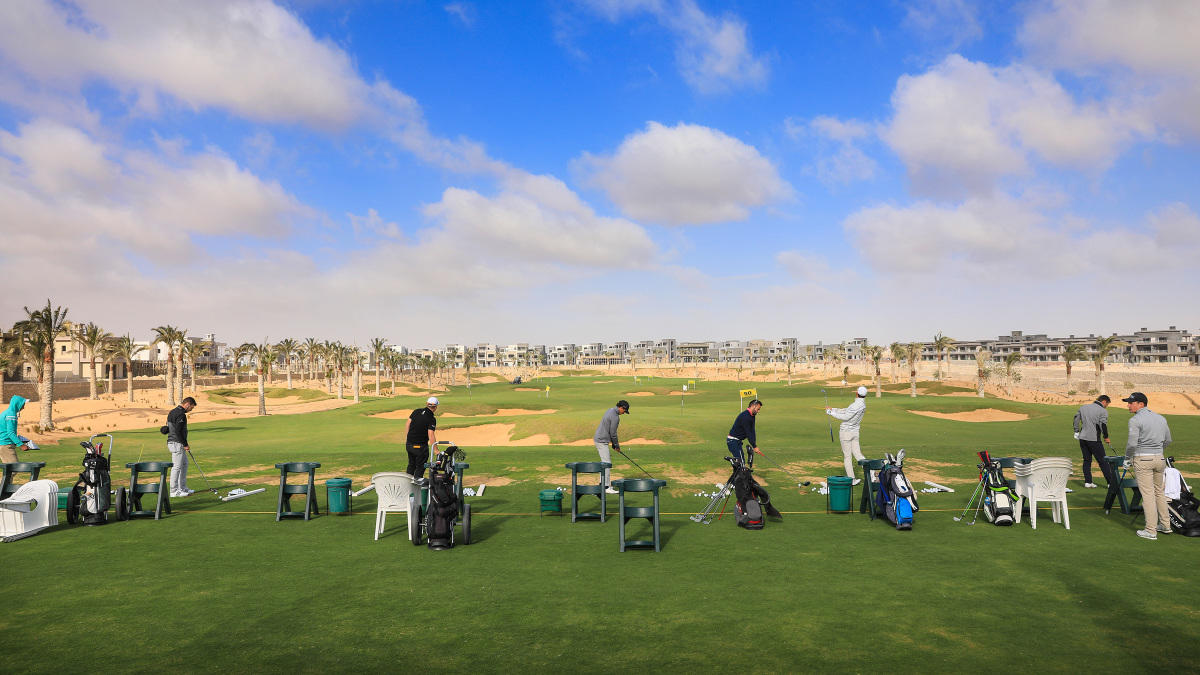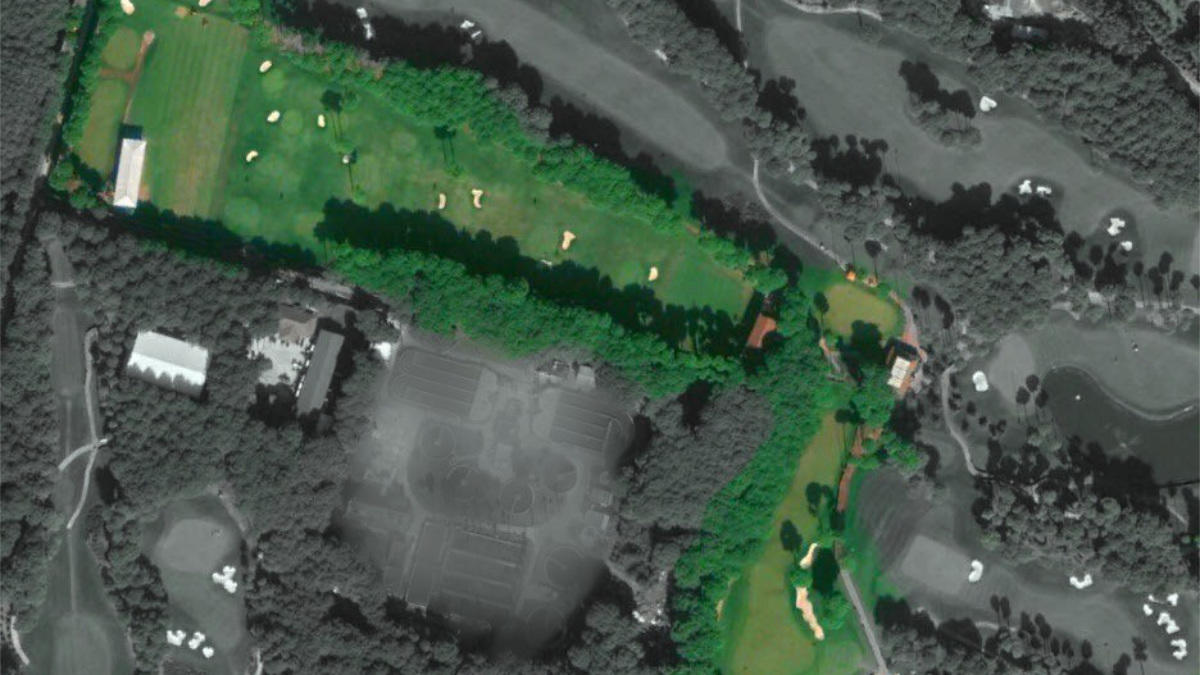- Homepage
- News and Features
- Are your practice facilities an afterthought or the centre piece?
Are your practice facilities an afterthought or the centre piece?

You’ve just arrived at a golf course that you’ve never played at before and ahead of teeing off, you decide to head to the nets for a bit of a warm up and putt, just to shake off some of the rust.
Arriving at the nets, you find they’re hanging loosely off the frame, with holes in them, while the putting green is covered in disease. It’s a bad start and you haven’t even made it to the first tee.
More and more golf clubs are identifying how driving ranges and attractive and useful practice areas can help drive revenue streams at the golf club.
First impressions are important and Tim Lobb, vice president of the European Institute of Golf Course Architects (EIGCA) and founder of Lobb and Partners, offered some insight into how you can ensure golfers can have a positive impression of your course before they even set foot on the first tee.
GI: The first question is a simple one with no doubt a complicated answer… what makes a good practice area?
Tim Lobb: I don’t think there is a single answer for this as the best practice area will utilise the available land the best. I guess as putting takes the smallest land area and probably accounts for 40% of all golf shots, then this is the starting point to get right.
GI: Is it fair to say that at too many clubs the practice facilities are an afterthought?
TL: I think the practice facilities are a vital ingredient to the overall success of the golfers’ experience. Those clubs who don’t invest in their practice facilities seem to maintain the status quo or even see a drop in enthusiasm by the membership.

GI: What role do practice facilities play in the customer journey?
TL: Practice facilities are the precursor for the playing of a golf round, but probably more importantly they are the mechanism for improvement to one’s game. Like all human beings I love to monitor my progress and good practice facilities that encourage me to practice and get better play a vital role in the customer journey for that day, but also for my entire golfing career.
GI: Should you treat the maintenance of practice areas the same as you do the rest of the course?
TL: The maintenance of the facility should try to replicate the golf course experience, but in reality, they might be slightly different. As you have a high » concentration of people and foot traffic at a practice facility, it would require more aggressive measures to keep the turf healthy and vibrant. This might include slightly harder‑wearing turf species with a quicker divot recovery rate and bunker construction that can take a lot more play than a normal course bunker.
GI: What’s the best practice area you’ve encountered?
TL: There are some amazing practice facilities in the US and I would say in general they are more advanced than in Europe. In Turkey (Belek) there are some great practice facilities, including our course at Carya, as the clubs have really set themselves up for group tuition by visiting club professionals with their members. At Carya we did more than 6,000m2 of practice putting green to accommodate these large groups with a double‑ended driving range. Teaching professionals can teach every shot in the book and have the space to do so.
GI: How much space and budget do you need to invest if you’re thinking of building a really good par‑3 course to get beginners introduced to the game?
TL: I would say an area of 10 to 20 acres will give you a chance to do an excellent par‑3 nine‑hole golf course. This doesn’t just have to be a regular little course but should be designed in such a fashion to offer a number of different playing options. With multiple teeing options it would allow a course to be set up with differing lengths and play directions according to that daily course set up. Having a multi‑functional facility will surely add to its appeal. You may even be able to consider having a footgolf layout on the same footprint of land.

GI: Fun facilities such as TopGolf are rapidly gaining in popularity, bringing a fresh spin to the driving range experience. Should clubs be looking to introduce some of these fun, alternative aspects to their practice facilities?
TL: Absolutely, the introduction of fun practice or fun golf ideas should be part of the golf offering. If it brings more golfers or at least diversifies the golf offering, then it is a great advantage.
GI: Can you provide some tips to maximise the customer experience of your practice facilities?
TL: Wherever possible, think about the process of the practice routine, from leaving the clubhouse to making it to the first tee. Making the facilities as close as possible to each other is fairly fundamental to the ultimate success of the customer journey. Also, we have found it pretty beneficial to have the practice putting green within visual sight of the first tee as it also helps with the smooth flow of golfers arriving to the first tee on time.
GI: Can you strike a balance between these suggestions and the requirements of the course?
Sometimes it is difficult to have everything we need as we cannot fit a square peg into a round hole. I would suggest that practice putting greens and short game areas always be considered first as they are the smallest land use and account for more than half of the game. With enough space and some clever redesign, full length driving ranges can be developed. Alternatively, we are seeing an increased popularity in indoor training centres or fully netted and smaller driving ranges. I think both are great options if space is a bit restricted.
This article was first featured in the January 2021 eedition of Greenkeeper International available for BIGGA members to read online here.
Where to look next...
AMS Robotics (UK)
The robot technology designed by Belrobotics and offered by AMS Robotics (UK) forms a fully autonomous grounds maintenance solution used by thousands of private and public facilities across Europe.
Golf and sports clubs have proven to be the most popular facilities that utilise the robotic systems however they are widely used to manage council grounds and private gardens. A full driving range maintenance system includes a BigMow robotic mower, a BallPicker ball collector and an automatic wash and return system.
BigMow RTK continuously cuts, managing an area up to 50,000m2 five times per week. Weighing 71kg, stress to the outfield due to heavy machinery is completely eliminated, enabling cutting to proceed in wet conditions.
BallPicker operates in a similar continuous way on the same size outfield. It will collect until its tank is full, deposit them in the pit and automatically head back out to continue collecting. The pit transports the balls to the wash and return system, where the balls are automatically cleaned and returned to the dispenser. BallPicker has features that allow high density areas to be recognised at peak times and will subsequently focus its collecting on them.
When batteries run low, both BigMow and BallPicker take themselves back to charge automatically, then return to work as normal. Both machines are connected to a web portal that allows them to be fully controlled and monitored anywhere and everywhere.
Steven Gray, head greenkeeper at Melville, said: “Our outfield on the driving range has looked fantastic all winter compared to the mud field we usually have using tractors and ball collectors. and our greenstaff have time to get on with more important jobs. The support from AMS is second to none.”
Call 01462 676 222 or email [email protected]
EGM Group
During the current and unprecedented situation, the importance of personal and collective wellbeing has never been greater.
Physical activity and sports participation contribute greatly to this; especially those played safely outdoors. At EGM, we are proud to have served our customers through a vibrant and busy summer, as both the social and health benefits of the sport have been realised and embraced by veterans and newcomers alike.
There has never been a more important time to support each other and grow together. Even though everybody has encountered unique challenges, we have helped many clubs to develop or refurbish practice facilities, as well as supplying high quality consumables to keep up with increased customer footfall during the year.
The EGM Group consists of European Golf Machinery, Rangeball UK and EGM Products. Combined, we aim to be a one‐stop shop for our customers. We specialise in developing, manufacturing, and sourcing solutions for every customer.
Talk to us today to discuss your project – we will be happy to listen and advise.
Badcock Golf
Badcock is a UK manufacturer for all driving range machinery.
With nearly thirty years’ experience in the industry, we pride ourselves on our expertise to ensure your success. Our large range of solutions can be tailored to your individual requirements, from small practice grounds to large ranges.
Choosing Badcock ensures reliable UK‐based service with high‐quality equipment, all designed and hand‐crafted in our factory in Kent. With our dedicated 24/7 customer service team, you will have peace of mind all your needs will be processed quickly and efficiently.
We are always striving for continuous improvement. Listening to the challenges you face and staying up to date with the latest trends guarantees you will always receive the highest quality products and customer support.
To view all our driving range products including golf ball dispensers, collectors & washers along with range mats and accessories, visit www.badcockservices. net. For any questions and to speak to a member of the team call 01622 891 717 or email [email protected]
Thank you for being a valued customer, we look forward to hearing from you soon.
Author

Karl Hansell
Karl has been head of communications for BIGGA since March 2016. His duties include editing the monthly Greenkeeper International magazine, in addition to other communications activities for the association.
